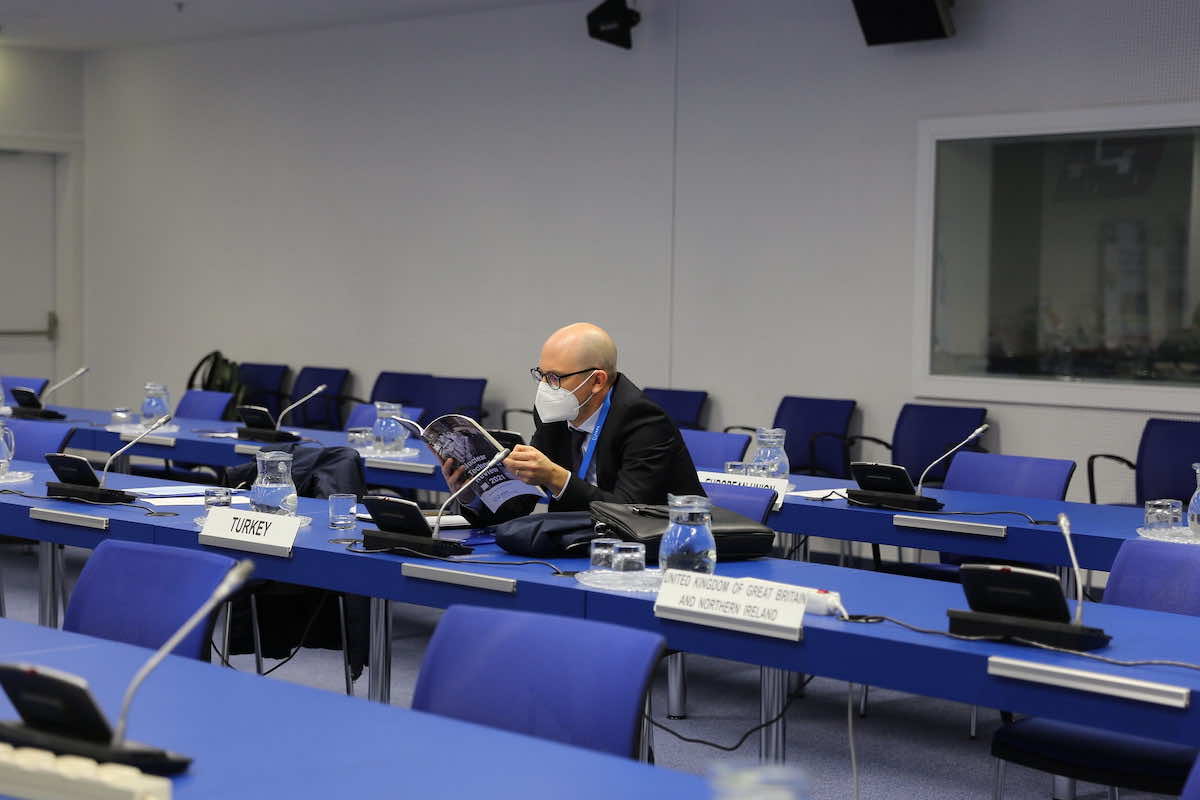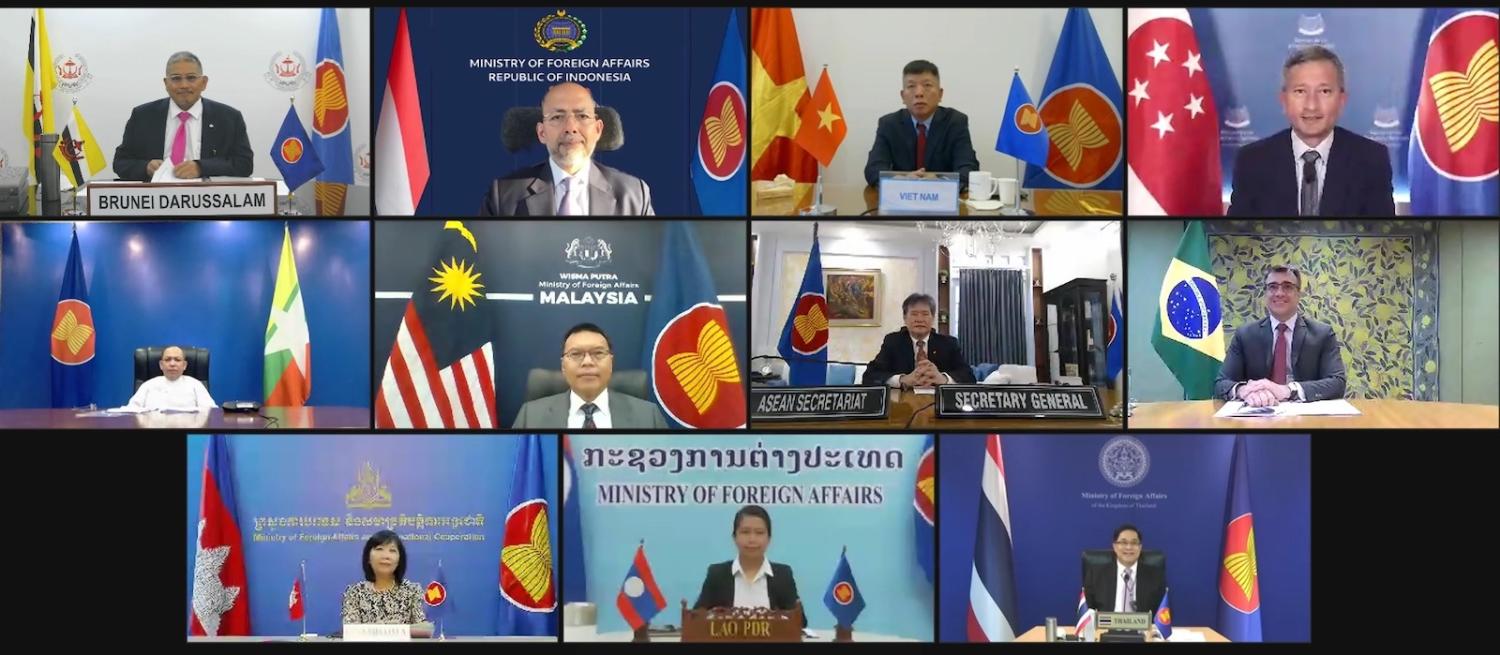We’re firmly entrenched in an era of hybrid diplomacy, floating between in-person and videoconference diplomacy. In speaking to those in the game, three facts have come to light: there’s no turning back; videoconferences are inadequate; and the only way out, is forward.
Foreign ministries have already invested in platforms to ensure secure interaction with partners, and brought in consultants to maintain, train, and upskill staff to perform on these platforms. They have also implemented plans to reform hiring and recruitment to better reflect the new environment. Multilateral agencies have similarly trimmed the numbers of in-person conferences, increased and facilitated access to online meeting platforms, and started addressing questions of online protocol, norms, and procedures. As post-pandemic foreign ministry budgets tighten, the videoconference will become further entrenched.
Stuck with an inadequate platform, diplomacy needs to innovate.
However, videoconference diplomacy was an emergency measure, allowing a propped-up version of the practice to stumble on. But the solution was hardly modern, instead based on technologies more than three decades old had anyone bothered to use them. According to most diplomats, it serves as an inadequate platform on which to rest the practice of diplomacy.
Videoconference diplomacy lacks nuance, subtlety, and the personal touch. There are no breaks, sideline chats, quiet drinks, or steps outside to calm tensions, build rapport, or explore new opportunities. It lacks the “essence” of diplomacy.
The essence of diplomacy can be understood as the norms facilitating estranged interaction that have remained by and large continuous since humanity’s earliest ancestors met their neighbours, and decided to remain separate, but at peace. Over time, these norms became features of diplomatic systems across culture and time. They include the primacy of communication in spoken, written and/or symbolic and ceremonial form; a mode of thought emphasising patience, precision and deliberation; the development of a professional corps of cosmopolitan mediators with appropriate status, skill, and distinction; the development between corps a shared sense of purpose, rapport and behaviour, from which a “stock market of reputation” could form.
In an in-person conference setting, there are distinct modes of interaction in which the essence of diplomacy plays a prominent role: the administrative, the symbolic and ceremonial, public oratory, group and personal liaison, and intermediary liaison. Videoconference diplomacy allows interaction in the administrative and public oratory modes, but severely limits interaction in the symbolic and ceremonial, group and personal liaison, and intermediary liaison modes. Videoconferences do not build trust. This means much of the essence of diplomacy is lost.
As one diplomat put it, a young diplomat starts working with partner country diplomats at the same level. They age together, develop professionally together, and throughout their career recognise each other as reliable or unreliable colleagues seeking to solve the same problems together – and that relationship starts in the quiet moments of idle conversation they share on their first posting, during breaks from serving senior diplomats. How can young diplomats build such relationships in videoconference?

Videoconferences also reinforce long-term trends that weaken the essence of diplomacy. The most significant of these is the growing tendency of the executive to not just formulate and plan, but also implement policy. When the executive implements policy, personal and party supporters take roles previously assigned to diplomats. The executive no longer receives advice borne of institutional memory and professional knowledge embedded in foreign ministries but rather advice borne of ideology and/or political acumen. Most importantly, the wisdom of utilising intermediaries in interaction with partners is forgotten.
The result is policy implementation that becomes increasingly narrow in scope, more politicised, and sometimes erratic and emotional. Patience, precision and deliberation gives way to opportunity in the electoral cycle. Politicians are not diplomats.
The “second life” diplomats once led for three-year stints at post could in the future be replaced by three-hour stints in a simulated virtual environment.
Stuck with an inadequate platform, diplomacy needs to innovate. Videoconference diplomacy could be what the airship was to innovation in transport technology. Airships allowed travel over the Atlantic but specific drawbacks meant they never replaced the ocean liner. Yet, within three decades people were squeezed into economy class with peanuts and a Chardonnay, crossing the Atlantic in airplanes. Airships were a stepping-stone to the airplane. Videoconference diplomacy could be an inconvenient, awkward, difficult moment on the way to a more digitally enabled future for diplomacy.
There are hints as to where diplomacy could go. Simulation platforms adapted to use facial expression and body movement recognition, whole body avatars, proximity interaction, and augmented reality environments can already replicate the entire United Nations diplomatic experience, everything from “chance” meetings with an interlocutor on the Plaza before passing security, to turning your back and exiting the General Assembly chamber as a least favourite leader speaks.
Combine this with artificial intelligence hosting, facilitation, and mediation, instantaneous interpretation and translation, and big data inputs into foresight and decision-making, and the “second life” diplomats once led for three-year stints at post could in the future be replaced by three-hour stints in a simulated virtual environment.
The “essence” of diplomacy is not lost, it’s just frozen on a poor video connection. For diplomats, innovators, and students of diplomatic studies, it’s time to think beyond the videoconference.
